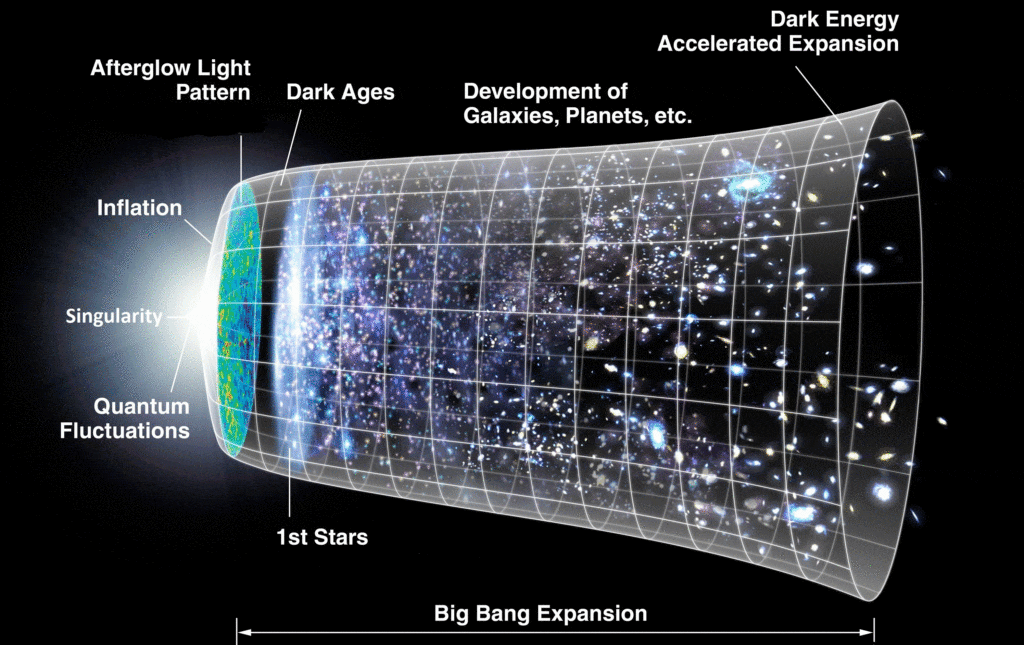These are the chronicles of the heaven and of the earth when they were created, in the day that the Eternal G‑d made earth and heaven. (Genesis 2:4)
The second chapter of Genesis contains many repetitions, the most famous of which is the second rendering of the story of the creation of Adam and Eve. The classical commentators explain that this chapter adds further details to the original story of creation told in chapter one. Indeed, the Torah itself makes it clear by stating that “these are chronicles of the heaven and the earth…” Thus, the biblical cosmology sketched out in the first chapter of Genesis is retold here in greater detail.
***
And a river went out of Eden to water the garden. (Genesis 2:8-10)
This verse positions Eden as the wellspring feeding the river that waters the garden.
In the esoteric teachings of Kabbalah, the wellspring-river metaphor is used to illustrate the relationship between the two sefirot Chokhmah and Binah. In this analogy, the spring is a metaphor for the sefirah of Chokhmah, because it is the source of water, just as Chokhmah is the source of wisdom. Furthermore, a wellspring is a pointlike opening, just as Chokhmah is traditionally depicted as a dot—the seminal flash of inspiration. Indeed, yud, which is essentially a dot and is the first letter of the four-letter ineffable name of G‑d, the Tetragrammaton, is identified with Chokhmah. The river, on the other hand, serves as the metaphor for the sefirah of Binah. Fed by a pointlike wellspring, the river expands in all directions, in that the river has a depth, a width, and a length. Similarly, Binah takes the initial idea from Chokhmah and deliberates, explores, and fleshes it out in all directions. Thus, the second letter of the Tetragrammaton—heh, which is graphically an expansion of the letter yud in two directions—is identified with Binah.
Thus, in Kabbalah, on a mystical level, Eden and the river flowing from it represent Chokhmah and Binah, respectively.
We see, therefore, that both on a literal level—as the wellspring feeding the river—and on a mystical level—as a metaphor for Chokhmah that inspires and feeds Binah—Eden represents a pointlike concept: a singularity.
As we discussed in the essay “Big Bang,” Nachmanides describes the creation in terms that today we would call the Big Bang. Indeed, the similarity between Nachmanides’s description of the creation and the modern concept of the Big Bang is uncanny. Belgian astronomer Georges Lemaître, who along with Alexander Friedmann proposed that the universe was expanding, reasoned that if we reverse the direction of time, the process of the expansion of the universe would look very much like the gravitational collapse leading to the formation of a black hole. Just as a black hole has at its center a singularity—a point where the curvature of spacetime is infinite and the laws of physics break down—so too the universe must have been born out of a singularity. Indeed, the universe immediately before the Big Bang is predicted by General Relativity to have been a singularity, the so-called initial singularity. Extrapolating backward in time through the history of the expanding universe, we come to an area with infinite density and temperature—the singularity.
As noted above, the second chapter of Genesis is the “chronicle” of creation, fleshing out in detail the original story sketched out in chapter one. Perhaps the narrative of the river flowing from Eden to irrigate the garden may be viewed as a metaphor for the cosmology of the universe.
Indeed, as discussed above, Eden as the pointlike wellspring feeding the river on a literal level and as pointlike Chokhmah feeding the seminal idea to Binah on a mystical level is very much like the initial singularity that is the origin point of our universe.
Just as Binah develops and expands the seminal idea it receives from Chokhmah, the river (which, in Kabbalah, represents Binah) flowing from Eden expands and widens as it gets further from its source, the wellspring. This river lends itself as a metaphor for the expanding universe.
Finally, the only habitable location in this story is the garden which, in fact, was inhabited by the first humans, Adam and Eve. This garden may be viewed as a metaphor for our planet Earth—the only celestial body inhabited by humans. This parallel is even starker in the Kabbalah, where both the garden and the planet Earth are the physical embodiments of the sefirah of Malchut.
